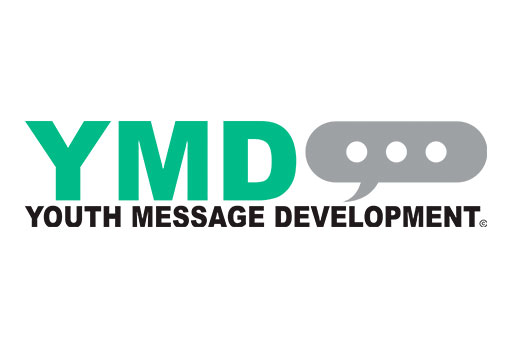
REAL media is grounded in media literacy and social-cognitive theories, and guided by experiential-learning principles. The activities are designed to be engaging and challenging. They encourage students to reflect and offer their thoughts via open-ended questions as well as quizzes and optional depth sections where students can further explore their interests. Each level ends with an interactive challenge that allows participants to apply new skills.
The first four levels address multiple substances such as alcohol, vaping, and tobacco use. In the (AVT) version students create their own prevention messaging to prevent alcohol, vaping, tobacco, and marijuana use. In the (Opioid) version of REAL media, many substances are addressed but the focus is on opioid messages and students create their own prevention messaging to prevent Opioid misuse.
REAL Media
BRIEF PROGRAM DESCRIPTION
REAL media is the web-based version of the evidence-based program Youth Message Development.
REAL media is a five-lesson, e-learning curriculum to prevent adolescent substance use among 12- to 18-year-olds by:
- increasing their knowledge of advertising techniques used to sell alcohol, tobacco, and other drug (ATOD) products;
- developing their counter-arguing and critical-thinking skills in response to ATOD messages;
- helping them apply these skills and techniques to create youth-driven,
anti-substance use messages.
SPECIFIC OUTCOMES
REAL media is a digital adaptation of the face-to-face Youth Message Development (YMD) program that receives a rating of EFFECTIVE on a variety of evidence-based programs registries including NREPP.
Evaluation studies demonstrate that kiR:
- reduces pro-drug attitudes
- reduces intentions to use drugs
- increases ability to resist pressure to use
| LEVEL -1 | An introduction to media and advertising with content on costs and ethics |
| LEVEL -2 | Media reach and persuasion strategies used by advertisers to sell ATOD products |
| LEVEL -3 | Claims used in ATOD messages and counterarguments used in anti-ATOD messages |
| LEVEL -4 | Production techniques used by advertisers including setting, colors, font size, and object placement |
| LEVEL -5 | The active application of content learned in lessons 1-4 to the development of a poster or 30-second video that includes an anti-substance use message |
Two versions to choose from!
- Alcohol, vaping, tobacco, and marijuana
- Opioids
Flexible Implementation! The lessons are short (20-25 minutes each) and self-paced. The flexible format allows levels to be completed individually or via group sessions in one or more sittings. They do require computer access for each participant and an internet connection that can support the number of individuals in the group or the individual on a personal computer. Optimal delivery is student individual use in class or as an assignment; however, a teacher-led option is also available.
REQUIRED MATERIALS
REAL media includes:
Youth access to online platform, including interactive games, audio walkthrough, and challenges. Access code to online program, Access code obtained through REAL Prevention.
ANNUAL LICENSE
- Option #1: Individual License (Annual)
-
- $5
-
- Option #2: Teachers Site License (Annual)
-
-
-
- Fewer than 100 students: $350
- 101 – 150 students = $500
- 151 – 300 students = $800
- More than 300 students = $1500
-
-

YOUTH MESSAGE DEVELOPMENT
BRIEF PROGRAM DESCRIPTION
Youth Message Development (YMD) is a 4-lesson, face-to-face delivered curriculum to prevent adolescent substance use among 13- to 17 year olds by:
- Increasing their knowledge of advertising techniques used to sell alcohol, tobacco, and other drug (ATOD) products;
- Developing their counter-arguing and critical-thinking skills in response to ATOD messages;
- And helping them actively apply these skills and techniques to create youth-driven, anti-substance use messages.
The curriculum content is grounded in media literacy and social-cognitive theories, and guided by experiential-learning principles. The activities are designed to be engaging and encourage collaborations and discussions among participants. The curriculum incorporates ads for generating discussion and analysis, activities to increase involvement, and small-group structure to facilitate learning from peers.
Youth Message Development (YMD) is a 4-lesson, face-to-face delivered curriculum to prevent adolescent substance use among 13- to 17 year olds by:
- Increasing their knowledge of advertising techniques used to sell alcohol, tobacco, and other drug (ATOD) products;
- Developing their counter-arguing and critical-thinking skills in response to ATOD messages;
- And helping them actively apply these skills and techniques to create youth-driven, anti-substance use messages.
The curriculum content is grounded in media literacy and social-cognitive theories, and guided by experiential-learning principles. The activities are designed to be engaging and encourage collaborations and discussions among participants. The curriculum incorporates ads for generating discussion and analysis, activities to increase involvement, and small-group structure to facilitate learning from peers.
SPECIFIC OUTCOMES
Evaluation studies demonstrate that YMD:
- reduces pro-drug attitudes
- reduces intentions to use drugs
- increases ability to resist pressure to use
YMD is rated as EFFECTIVE on a variety of evidence-based programs registries including NREPP. Effective for improving knowledge, attitudes, and beliefs about substance use.

Youth Message Development consists of four lessons that focus on the following topics:
| LEVEL -1 | Media reach and persuasion strategies used by advertisers to sell ATOD products |
| LEVEL -2 | Claims used in ATOD messages, and counterarguments used in anti-ATOD messages |
| LEVEL -3 | Production techniques used by advertisers including setting, colors, font size, and object placement |
| LEVEL -4 | The active application of content learned in lessons 1–3 to the development of a poster that includes an anti-substance use message |
Flexible Implementation! The four lessons can be taught in one, 90-minute session; separated across four, 20- to-25-minute sessions; or two, 45-minute lessons to groups of up to 30 students. Additional youth involvement and application can be encouraged by including optional activities.
REQUIRED MATERIALS
BUNDLE includes:
- Teacher’s Guide with all four lessons
- Student handouts
- PowerPoint presentation
-
-
EVALUATION MATERIALS:
Make your own Media!
Four 40-minute lesson plans designed to teach students step-by-step how to design their own prevention media such as videos or posters.
Free: Request with Purchase
PRICE
$350 (includes 5 student workbooks)
